Country research: Marshall Islands
Subpages:
(No subpages yet)
The content reflects the results of Perplexity's research and analysis and does not represent an expression of opinion by Gradido. They are intended to provide information and stimulate further discussion.
Research dossier Marshall Islands with a focus on the Bikini Atoll: Potential for a possible Bikini Peace Project
The Republic of the Marshall Islands (Marshallese: Aolepān Aorōkin Ṃajeḷ) is an island state in central Oceania. It comprises the archipelago of the same name, which belongs to Micronesia. With 43,000 to 60,000 inhabitants (according to various sources) on an area of just 181 square kilometers, the Marshall Islands are one of the smallest states in the world. The republic, with Majuro as its capital, is linked to the United States by an association agreement. The official languages are Marshallese and English. Until independence in 1986 (association agreement with the USA), the islands were a UN trust territory controlled by the USA. The more than 1000 islands rise on average only two meters above sea level, which makes them very vulnerable to rising seas caused by climate change. The island state also includes Eniwetok Atoll and Bikini Atoll, which have been used for nuclear weapons testing. (Wikipedia)
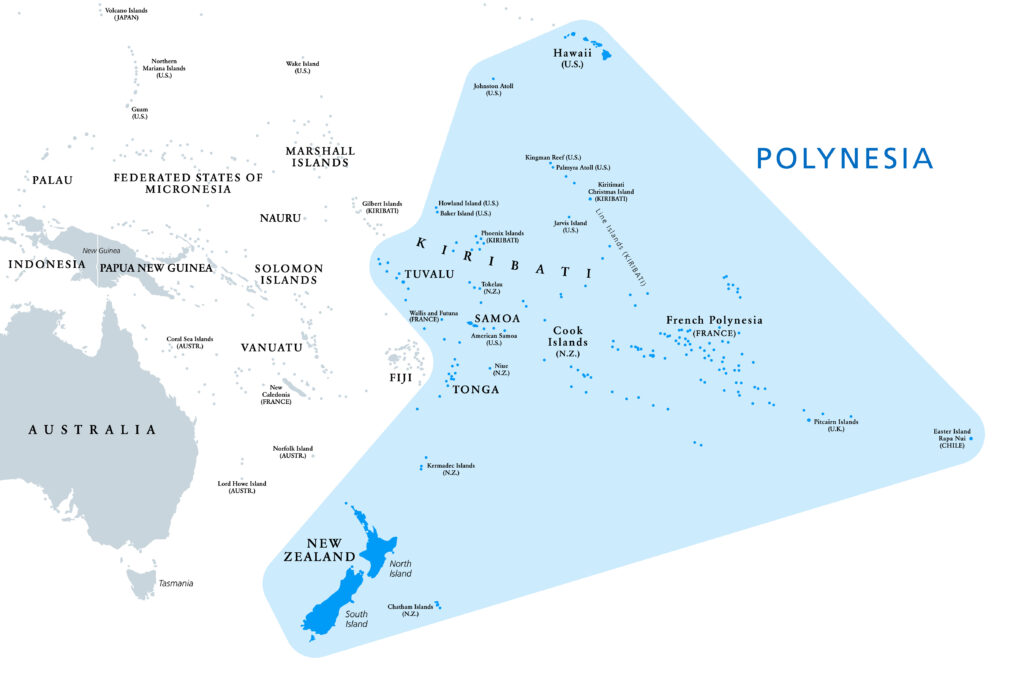
The Republic of the Marshall Islands is at a critical turning point in its history. As one of the first countries to be completely threatened by climate change, the approximately 60,000 inhabitants are facing unprecedented challenges. At the same time, this existential situation offers unique opportunities for innovative solutions such as a possible Bikini Peace Project and alternative economic models such as Gradido. This analysis is based on current data from 2024-2025 and highlights both the urgent problems and the remarkable potential of this special nation.^1^3
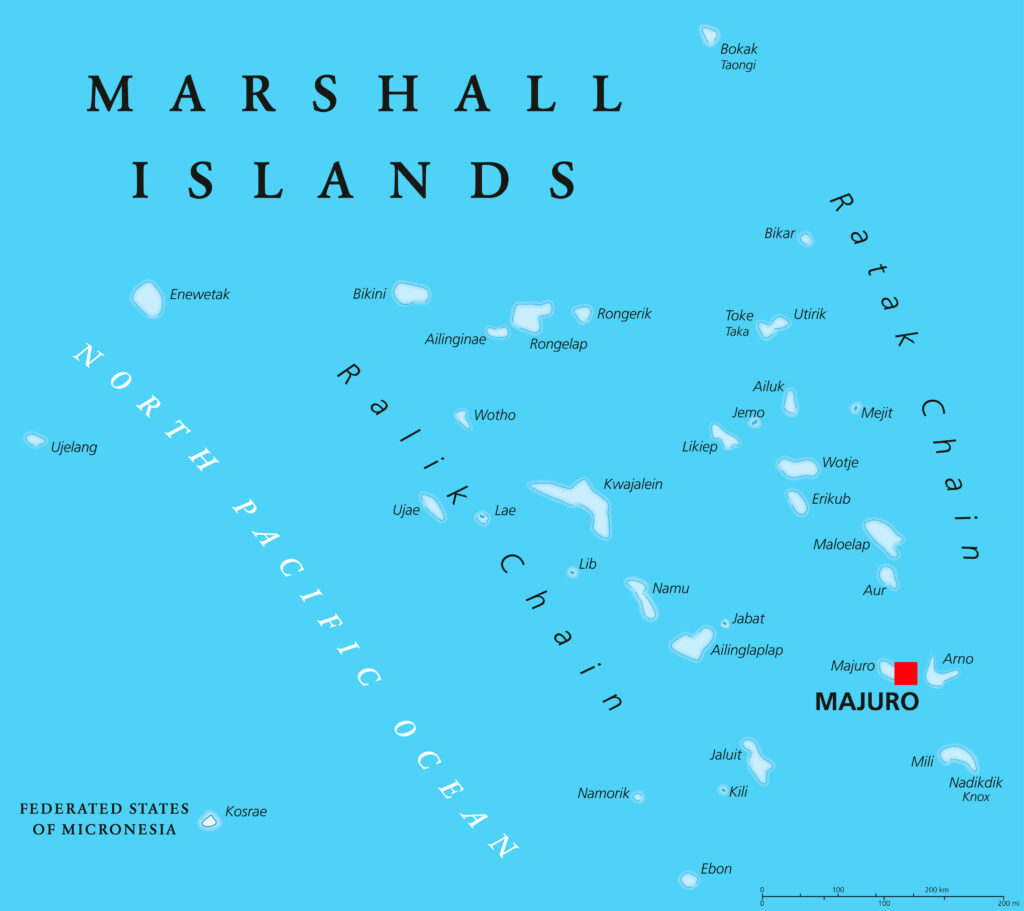
Social, economic and political situation
The precarious economic reality
The Marshall Islands find themselves in a paradoxical situation: despite a nominal GDP per capita of 3,530 US dollars, 52.7% of the population live below the national poverty line - the highest rate of all Pacific states. This staggering statistic highlights the extreme inequality in income distribution and the structural deficits of the current economic system.^4
Unemployment is around 40% nationally, reaching as high as 47% in urban areas such as the Jenrok district of Majuros. Youth unemployment is particularly severe at 79%, leaving an entire generation without job prospects. These figures reflect the fundamental inability of existing economic structures to create sufficient employment opportunities[^6].
The public sector dominates the economy, with the US acting as the main employer and providing millions of dollars annually through the Compact of Free Association. This dependence will partially end in 2033, forcing the government to develop more sustainable economic models. The private economy is mainly limited to fishing, copra production and a still embryonic tourism sector.^7
Bikini Atoll: A symbol of injustice
The Bikini Atoll exemplifies the historical injustices and current challenges of the Marshall Islands. Of the original 167 inhabitants who were resettled in 1946 for the American nuclear tests, only 25 are still alive today. The approximately 5,400 Bikini descendants are scattered across the globe: 800 live on the inhospitable Kili Island, 2,550 in Majuro, 300 on Ejit and 1,400 in the USA and other countries.^9
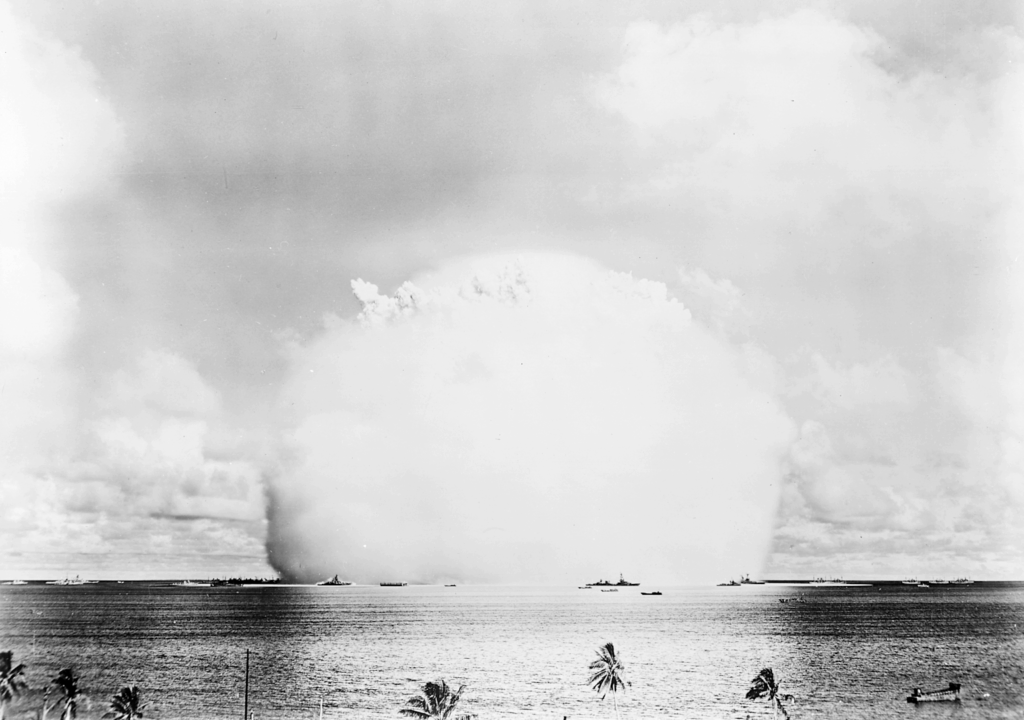
This diaspora highlights the profound social upheavals caused by the nuclear past. The Bikini Resettlement Trust Fund has around 126 million US dollars at its disposal, but a return to the contaminated atoll remains impossible for the time being. Although scientists at the Lawrence Livermore National Laboratory reported in 2012 that caesium-137 levels were falling faster than expected, the psychological and practical hurdles to returning remain high.^10
Political structures between tradition and modernity
The Marshall Islands practice a parliamentary democracy that coexists with traditional governance structures. The Iroij (chiefdom) system remains influential, particularly in land rights and local affairs. This duality between modern state institutions and traditional authority significantly shapes the political landscape.^12
Corruption is a chronic problem. A study published by Transparency International in 2022 shows that 59% of respondents consider government corruption to be a major problem. At the same time, two members of parliament were recently sanctioned by the US for corruption, underlining the international dimensions of the problem. Nevertheless, over half of those surveyed rate the government's efforts to combat corruption positively, which indicates a willingness to reform.^13
Distribution of wealth and opportunities
Extreme inequality between urban and rural areas
The distribution of wealth in the Marshall Islands is extremely unbalanced. While highly paid civil servants and US military personnel live in urban centers such as Majuro and Ebeye, two-thirds of the inhabitants of the outer islands struggle on less than one dollar a day. This stark inequality reflects the colonial past and continued dependence on external funding.^4
Paradoxically, women make up the majority of the labor force (64% in the Yenrok region), but work mainly in low-paid sectors such as fish processing and catering. Despite the matrilineal system, which theoretically favors women, in practice they earn less than men and bear the brunt of care work[^6].
Access to education as a classroom
The education system significantly increases social inequalities. While primary education is theoretically free, around half of all secondary school pupils attend private schools, the fees for which are unaffordable for many families. Only 17.5% of students achieve the minimum standards in the Marshall Islands Standards Assessment Test (MISAT), with math performance being particularly weak.^15
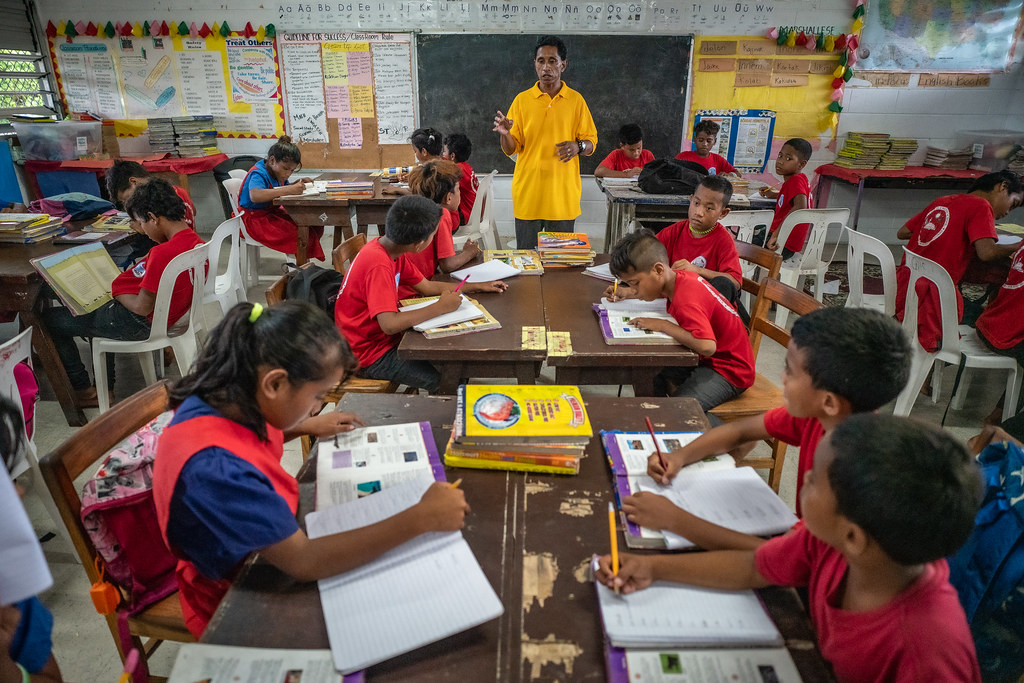
Children from the outer islands are particularly disadvantaged as they have to move to Majuro for secondary education and often live in precarious conditions in dormitories. These educational barriers perpetuate poverty and increase the exodus of talented young people.^16
Health disparities
Healthcare also shows extreme inequalities. While Majuro has a hospital and basic medical care, residents of the outer islands often have limited access to health services. The nuclear past has created additional burdens: The National Cancer Institute estimates that over a third of the population exposed to radiation will develop cancer.^17
Diabetes and other non-communicable diseases have reached epidemic proportions, mainly due to the transition to processed imported foods. This health crisis is straining the weak healthcare system and exacerbating social inequalities.^17
Migration, diaspora and return flows
The great hike to Arkansas
Migration from the Marshall Islands is a fascinating phenomenon. While most Pacific migrants choose Hawaii as their destination, Arkansas has become the most important continental destination. Over 15,000 Marshallese live in the region around Springdale, Arkansas, where they mainly work in poultry processing.^18
This migration began in the 1980s when John Moody became the first Marshallese to come to Arkansas and find work at Tyson Foods. The Compact of Free Association allows Marshallese to live and work in the U.S. without a visa, which facilitated this extraordinary migration movement.^19
Economic and social impact of the diaspora
The diaspora has ambivalent effects on the Marshall Islands. On the one hand, migrants send back remittances, which are vital for the survival of many families. On the other hand, the country is continuously losing its most educated and employable population - a classic "brain drain".^20
Migration is of particular importance to the Bikini community. Around 1,400 Bikini descendants live outside the Marshall Islands, mainly in the USA. This dispersion weakens social cohesion and makes collective decisions about the future of the atoll more difficult.^9
The challenge of integration
Marshallese migrants in Arkansas struggle with considerable integration problems. Although they are legally allowed to work, they do not have access to federal programs such as Medicaid or Social Security, which leads to a precarious living situation. Arkansas communities bear the cost of health care and other services without receiving federal funding.^18
This situation creates tensions and highlights the need for more comprehensive approaches to the integration of Pacific migrants. At the same time, it demonstrates the adaptability and resilience of Marshallese culture, which retains its identity even in a foreign country.
Governance, trustworthiness and security
Traditional vs. modern governance
The governance system of the Marshall Islands is characterized by a complex overlap of traditional and modern structures. The traditional system of the Iroij (chiefs) coexists with democratic institutions and influences land rights and local decision-making processes in particular. This duality can create both stability and conflict.^21
The matrilineal system theoretically gives women considerable power over land ownership and inheritance, but in political practice men are often the visible leaders. Female chiefs (Lerooj) traditionally have less direct power than male chiefs, but are consulted in important decisions.^12
Corruption as a structural problem
Corruption permeates various levels of the political system. The latest Transparency International study shows that politicians are most strongly associated with corruption, followed by the police. Electoral corruption and "sextortion" - the demand for sexual favors for public services - are particularly problematic.^22
The recent US sanctions against two Marshallese members of parliament for bribery by Chinese investors illustrate the international dimensions of corruption. At the same time, there is a lack of institutional control instruments such as an independent ombudsman or a public prosecutor's office for corruption offenses.^14
Security and stability
The Marshall Islands are considered politically stable with regular elections, an independent judiciary and a free press. Nevertheless, various factors are a burden on social stability: high unemployment, alcoholism, domestic violence and the consequences of the nuclear past.^23
Geographical isolation and limited resources make the islands vulnerable to external shocks. Climate change-related natural disasters such as the floods of January 2024 highlight the fragility of the infrastructure. At the same time, the geopolitical importance of the Marshall Islands is growing in the context of the US-Chinese rivalry in the Pacific.^24
Cultural values and community strengths
The matrilineal foundation
Marshallese culture is based on a strong matrilineal system that positions women as bearers of identity, land rights and cultural continuity. The saying "iep jāltok" (basket with the opening turned to one) symbolizes the importance of female children to the family lineage. Three central proverbs illustrate this philosophy: "an kōrā aelōn kein" (these islands belong to women), "jined ilo kōbo" (our mothers forever) and "iep jāltok".^25
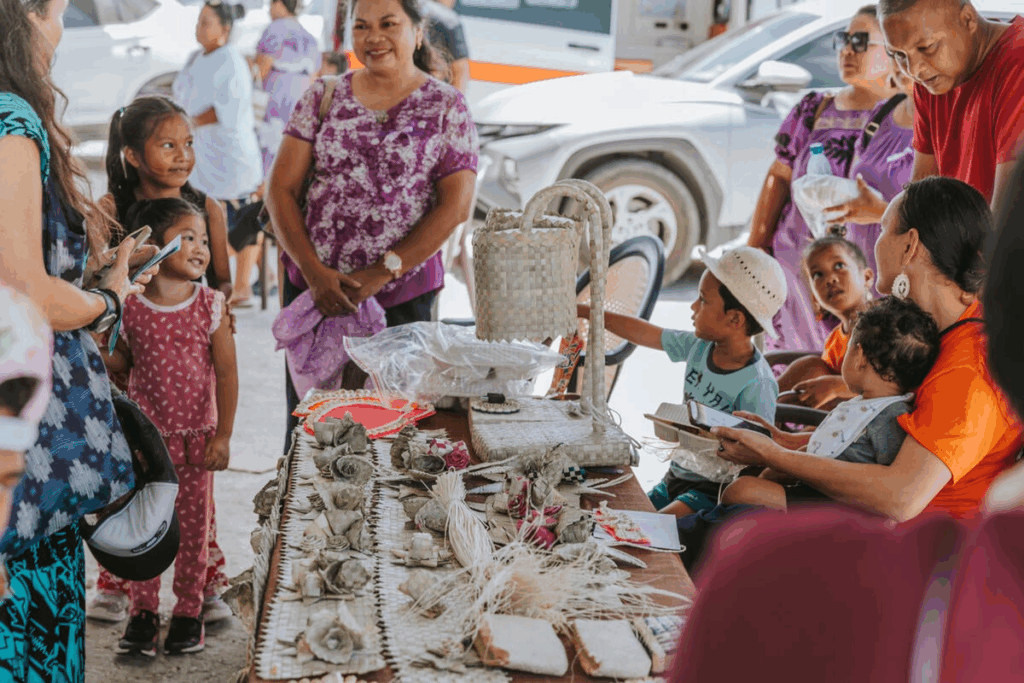
These cultural foundations create strong community ties and collective responsibility. Land is owned collectively by lineage groups (bwij), with women acting as the primary link to land rights. This structure naturally encourages cooperative decision making and resource sharing.^12
Spirituality and traditional practices
Marshallese spirituality combines Christian influences with traditional beliefs. The islands are referred to in folklore as "jolet jen Anij" (gifts of God), reflecting a deep understanding of the connection between humans and nature. This spiritual dimension could be important for the acceptance of alternative economic models that are also based on harmony and sustainability.^7
Traditional navigation techniques that have enabled survival for centuries demonstrate the ability to collectively store and transfer knowledge. These traditions show how communities can successfully manage complex systems without central authority.
Reciprocity and cooperation
Reciprocity (kar̄) is a fundamental principle of Marshallese society and regulates interpersonal relationships at all levels. This system of mutual obligations and support creates social networks that can cushion economic hardship. While modern monetary systems have partially undermined these traditional structures, they remain alive in many areas.^12
The concept of the extended family (ej̄ek) goes far beyond the nuclear family and creates widespread support networks. These structures could serve as a basis for community-based economic models such as Gradido, as they are already based on principles of collective responsibility and sharing.
Education and training: opportunities and barriers
Systemic challenges
The Marshall Islands' education system is struggling with fundamental structural problems. Despite theoretically free primary education, only 29% of primary school pupils and 14% of secondary school pupils achieve the national minimum standards. This alarmingly low performance reflects inadequate resources, poorly trained teachers and inadequate learning environments.^26
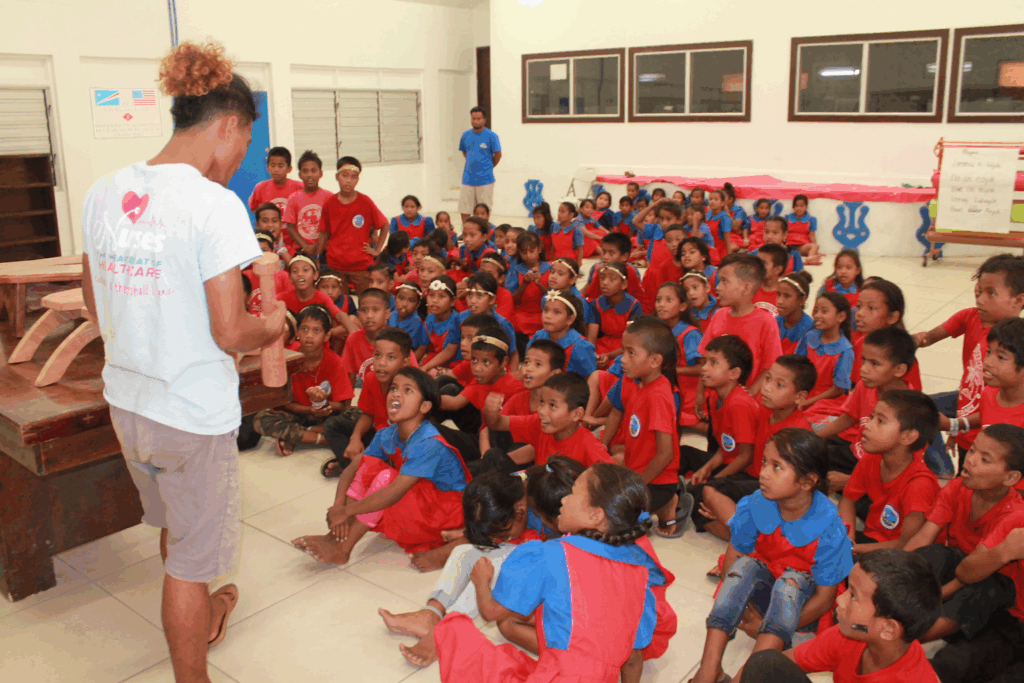
The situation is particularly dramatic in mathematics, where performance declines steadily from early to later grades. As a result, 99% of foreign workers have a secondary school diploma, while local graduates often need remedial education for university admission.^16
Geographical disadvantages
Pupils from the outer islands face particular challenges. They have to leave their home atolls for secondary education and live in urban centers, often in precarious conditions. Over 75% of pupils attend schools where the headteachers say a lack of resources is a major obstacle to quality teaching.^27
Geographical fragmentation makes it difficult to distribute qualified teachers across all the islands. Micro-classes with only a few pupils are common, which drastically increases per capita education costs. This situation reinforces the already existing inequalities between urban and rural areas.^26
Innovative approaches and potential
Despite the challenges, innovative approaches are emerging. The RMI Public School System's School Learning Garden Program combines education with hands-on farming and teaches students about sustainable cultivation. Taiwan supports programs to increase local fruit and vegetable production in schools, which improves both nutrition and education.^28
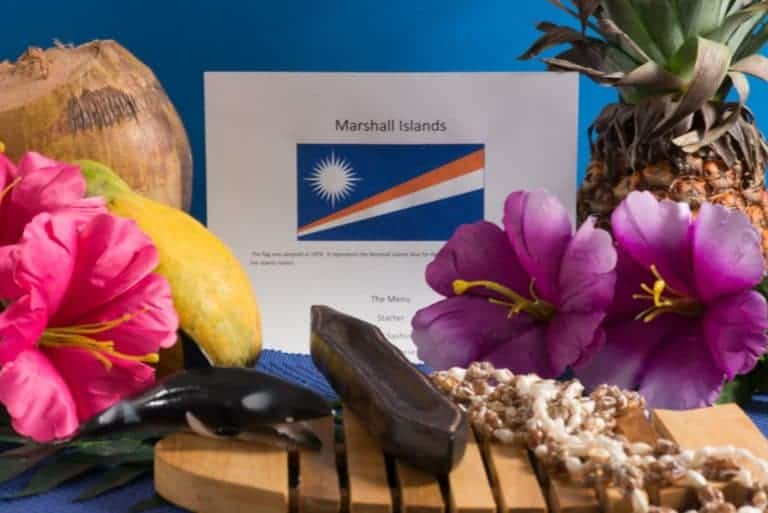
The College of the Marshall Islands (CMI) is developing new agricultural programs and preparing to offer regular agriculture and forestry courses. These developments show the potential for practical, community-based educational approaches that combine local needs with global knowledge.^29
Healthcare system and nuclear legacy
The nuclear health crisis
The Marshall Islands carry a unique health burden from U.S. nuclear testing between 1946-1958. Recent research shows that all 24 atolls received radioactive fallout, yet only three received medical cancer screening. The National Cancer Institute estimates that 1.6% of all Marshallese cancer cases between 1948-1970 were due to radiation exposure.^30
The inhabitants of Rongelap (55% attributable cancer risk), Utrik (10%) and other exposed areas are particularly badly affected. The long-term health consequences are a burden not only for those affected, but also for the entire healthcare system and society. A report published in 2025 shows that the global impact of the tests was much more far-reaching than previously publicly recognized.^31^30
Modern health challenges
In addition to the nuclear legacy, the Marshall Islands is struggling with an epidemic of non-communicable diseases. Diabetes and heart disease have become the leading causes of death, mainly due to the transition to processed imported foods. This double burden of disease is overwhelming the weak health system.^17
The high migration rates exacerbate the situation, as qualified healthcare professionals migrate abroad. At the same time, Arkansas communities must cover healthcare costs for Marshallese migrants who do not have access to US federal programs.^18
Innovative healthcare solutions
Despite the challenges, innovative approaches are emerging. The Marshallese Health Center in Springdale, Arkansas, which opened in 2011, provides specialized care for migrants. Telemedicine programs connect outlying islands with medical centers, although limited internet infrastructure hinders progress.^18
Prevention programs are increasingly focusing on traditional foods and physical activity. GCCA+ SUPA projects promote home gardens and healthy cooking classes that improve both food security and health. These programs show the potential for holistic approaches that combine health with sustainability and community development.^33
Care work and community structures
Traditional care systems
Marshallese society is based on strong care structures that are mainly supported by women. The extended family system (ej̄ek) creates support networks that extend far beyond the nuclear family. Elderly people are traditionally cared for within their families, and the community takes collective responsibility for children and those in need.
These structures show remarkable resilience, even under modern pressures. Migration and urbanization have changed, but not destroyed, traditional patterns. Marshallese communities in Arkansas and other US states reproduce many traditional care practices in new contexts.^18
Volunteering and church structures
Church organizations play a central role in the provision of social services. With nearly a dozen Marshallese churches in Springdale, Arkansas alone, religious communities serve as important social anchors. These institutions organize not only spiritual but also practical support for families in need.^18
Women United Together in the Marshall Islands (WUTMI) exemplifies civil society engagement. The organization supports survivors of gender-based violence and promotes women's rights. Such initiatives show the potential for expanded community-based support systems.^34
Challenges and opportunities
Modern pressures are putting traditional care systems under pressure. The high unemployment rate, especially among men, and the dominant role of women in the formal labor market (64% of the workforce in some areas) are creating new tensions. At the same time, these changes offer opportunities for innovative care models[^6].
Programmes such as Gradido's Active Basic Income could formally recognize and reward care work. The Marshallian tradition of reciprocity and collective responsibility seems to be well compatible with models that value community contributions, regardless of whether they traditionally constitute "productive" work.
Innovation and digital transformation
Emerging tech sector
The Marshall Islands is experiencing a remarkable digital transformation. The tech sector is expected to grow by 28% in 2025, with an internet usage rate of 73.2% and a 20.5% increase in social media users. This development creates new opportunities for innovative business models and services.^35
Fintech and blockchain technologies are at the center of this revolution. Companies such as FBS Markets offer forex trading platforms and are positioning the Marshall Islands in the global fintech sector. The regulatory framework for digital assets makes the country an attractive location for blockchain companies.^36
The SOV initiative: pioneering work on digital currencies
The most ambitious digital project is the planned launch of the Marshallese Sovereign (SOV), the world's first national digital currency. Developed in partnership with Algorand and SFB Technologies, the SOV will function alongside the US dollar with a fixed annual inflation rate of 4%.^37
This initiative demonstrates the government's willingness to explore innovative monetary approaches. Although the SOV encountered resistance from the IMF and experienced implementation delays, the project demonstrates a fundamental openness to alternative monetary systems. This experience could serve as a basis for the later introduction of Gradido-like systems.^39
Digital infrastructure and connectivity
The World Bank supports digital development through the "Digital Republic of the Marshall Islands" project, which invests in digital infrastructure and capacity building. These initiatives improve the conditions for digital innovation and e-government services.^36
At the same time, partnerships with Intelsat enable improved telecommunications between the scattered islands. This connectivity is essential for the implementation of digital currency systems and enables remote communities to participate in the digital economy.^36
Existing projects and alternative financial models
International development projects
The Marshall Islands are home to numerous innovative development projects. The Small Island Food, Water and Agriculture Project (SIFWaP) of the International Fund for Agricultural Development (IFAD) uses a community-based approach with a matching grant system. Communities identify their priorities and receive financial support for projects that improve food, water and income security[^40].
The UNDP Ridge to Reef project strengthens natural resource management through integrated approaches that link terrestrial and marine ecosystems. These projects demonstrate the effectiveness of participatory development models that involve local communities in decision-making processes.^41
Cooperative approaches
While formal cooperatives are rare, Marshallese communities practice various forms of collective economic organization. Traditional land use by bwij (lineage groups) resembles cooperative principles. Fishing communities often organize informally to share boats and equipment.^12
The Tobolar Copra Processing Plant functions as a state-owned enterprise with cooperative-like elements, although it has efficiency problems. These experiences offer lessons for the development of improved cooperative structures.^42
Innovative financing models
The Pacific Island Food Security Project uses innovative financing approaches that combine traditional grants with performance-based payments. Countries must meet certain implementation targets to receive additional funding. This system promotes ownership and efficiency[^40].
The EU Marshall Islands National Indicative Program for 2014-2020 provided 9.1 million euros for development projects. These programs show the importance of international partnerships, but also the dependence on external funding.^43
Potentials and challenges for Gradido
Structural compatibility
Marshallese society has several characteristics that make it particularly suitable for the implementation of gradido-like systems. The matrilineal system and the tradition of reciprocity (kar̄) create natural foundations for community-based economic models. The concepts of collective land use and extended family responsibility correspond to the cooperative principles of Gradido.^25
The strong role of women in society could support the implementation of Gradido's Active Basic Income, which formally recognizes care work and community contributions. The traditional understanding of work as a contribution to the community, independent of monetary remuneration, harmonizes with Gradido's philosophy of "Unconditional Participation".^44
Technological readiness
Advancing digitalization is creating favourable conditions for digital currency systems. With 73.2% of internet usage and a growing fintech scene, the Marshall Islands already has a foundation for digital transactions. The experience with the SOV project, although not fully implemented, has taught valuable lessons about digital currencies.^38
The World Bank's support for digital transformation and the existing blockchain infrastructure could facilitate the technical implementation of Gradido. At the same time, challenges such as limited internet connectivity on outer islands and digital skills gaps need to be addressed.^36
Economic necessity
The current economic challenges create an urgent need for alternative models. With 52.7% of the population below the poverty line and 40% unemployed, the existing system has clearly failed. Gradido's Active Basic Income could provide immediate relief while promoting productive community activities[^5][^6].
The imminent reduction in US support after 2033 makes alternative sources of income even more urgent. Gradido's triple money creation could stabilize public budgets without relying on external financing.^8
Cultural and social hurdles
Despite the structural compatibility, cultural factors could make implementation more difficult. The long dependence on external funding could create scepticism towards self-organized systems. Generational conflicts between traditionally oriented older people and younger people with modern attitudes could make consensus-building more difficult.
The Christian character of society could be both a support and a hindrance. Christian values of charity and community harmonize with gradido principles, but conservative interpretation could reject innovation. The role of churches as influential institutions makes their support essential.
Regulatory and political factors
The corruption problems could complicate the implementation of alternative currency systems. At the same time, Gradido's transparency and community control could contribute to the fight against corruption. The decentralized nature of the system could reduce abuse of power by central authorities.
The international dimension is critical. As a US-associated state, the Marshall Islands must coordinate monetary policy innovations with American interests. The experience with the SOV shows both possibilities and limitations for monetary sovereignty.^39
International cooperation and development partnerships
Multilateral partnerships
The Marshall Islands benefit from a complex network of international partnerships. The Global Environment Facility (GEF) supports national projects in the areas of biodiversity, climate change and land degradation with over 10 million US dollars. These programs demonstrate successful models for international cooperation in sustainable development.^46
The United Nations Development Programme (UNDP) is deepening its commitment through programs such as the Addressing Climate Vulnerability in the Water Sector (ACWA) project. This initiative combines climate adaptation with community development and shows how international support can strengthen local capacities.^34
Bilateral cooperation
Taiwan plays a special role through agricultural projects that improve local food production and school nutrition. The "Enhancing Nutrition Balance Through Agricultural Production" project demonstrates successful South-South cooperation and technology transfer.^28
The European Union provides 9.1 million euros for development programs and focuses on climate resilience and sustainable development. Japan supports renewable energy and water desalination, creating essential infrastructure for remote communities.^47
NGO networks and civil society
International NGOs complement government programs with more flexible, community-based approaches. Only four British NGOs work directly in the Marshall Islands, which underlines the importance of regional and local organizations. This limited international NGO presence could create space for innovative approaches such as Gradido-based development programs.^48
The Pacific Islands Forum Secretariat coordinates regional cooperation and could serve as a platform for the dissemination of successful Gradido models in other Pacific states. The regional challenges are similar, which creates scaling opportunities.
Integration of Gradido into existing partnerships
Gradido projects could be integrated into existing international cooperation frameworks. The UN Sustainable Development Goals provide a recognized framework for innovative development approaches. Gradido's focus on the common good, environmental protection and social justice harmonizes with SDG goals.
Climate finance could provide important resources for Gradido pilot projects. The Green Climate Fund and other mechanisms support innovative approaches to climate resilience. Gradido's environmental component could make such financing attractive.
Agriculture and food sovereignty
The precarious food situation
The Marshall Islands are facing a dramatic food crisis. Only 20% of food is produced locally, making the population extremely dependent on expensive imports. This dependence exacerbates poverty and malnutrition, while at the same time the transition to processed foods promotes diabetes and other non-communicable diseases.
The traditional staple crops - coconut, pandanus, breadfruit, banana, arrowroot and taro - have different distributions between northern and southern atolls. Climate change and salinization are further threatening these traditional crops, while rising copra prices are encouraging farmers to abandon diversification.^49
Innovative agricultural projects
Despite the challenges, innovative approaches to sustainable agriculture are emerging. The GCCA+ SUPA project promotes home gardens and community market gardens in Majuro and Jaluit. These programs combine traditional knowledge with modern techniques and create local food sources.^33
The Taiwanese cooperation supports school garden profiles that have already produced 5,743 kg of vegetables for 1,512 pupils. Such projects demonstrate the potential for local food production, even in limited spaces. At the same time, they teach young people practical agricultural skills.^28
Water and desalination as key technologies
Freshwater scarcity is the biggest obstacle to agricultural development. Innovative solar desalination plants are revolutionizing the water supply for remote communities. Green Energy Solutions, for example, installed 75 solar desalination plants on Wotje Atoll, which produce 450 gallons of drinking water per day.^51^47
These technologies could be adapted for irrigation and enable intensive agriculture even on very small areas. The combination of solar energy and desalination creates a sustainable basis for food sovereignty.
Biocyclic humus soil and permaculture potentials
The atollar soils are naturally nutrient-poor and salt-loaded, which requires innovative soil improvement approaches. Biocyclic humus soil could address these challenges by converting organic waste into fertile soil. Permaculture principles could help to create closed nutrient cycles.^53
The Reimaanlok project, an integrated approach to natural resource management, already provides a framework for holistic agricultural development. This approach takes cultural values, biodiversity conservation and economic needs into account at the same time.^53
Climate resilience and traditional knowledge
Climate change is exacerbating agricultural challenges through more frequent droughts, storms and sea level rise. At the same time, traditional knowledge offers valuable approaches for resilience. Agroforestry systems with breadfruit trees could rehabilitate degraded areas and produce large quantities of nutritious food.^54^1
Community-based adaptation (CBA) approaches show promising results. A study of 32 CBA initiatives in 20 Pacific communities found that locally funded and NGO-implemented programs were the most successful. Climate awareness programs and ecosystem-based approaches showed the best performance.^54
Gradido's potential for food sovereignty
Gradido's Active Basic Income could reward farmers for ecological and community-enhancing practices. Instead of only promoting cash crops, the system could reward biodiversity conservation, soil improvement and water use efficiency. This would incentivize sustainable practices that are currently economically disadvantaged.^44
Gradido's compensation and environmental fund could be used specifically for soil remediation and organic farming. This would be particularly relevant for the Marshall Islands, where nuclear contamination and climate change require extensive environmental restoration.^56
Conclusions and recommendations
The Marshall Islands are at a historic turning point. The existential threats posed by climate change, economic dependency and social fragmentation require radical solutions. At the same time, the strong cultural foundations, growing digital infrastructure and readiness for innovation offer unique opportunities for transformative change.
The Bikini Atoll symbolizes both the historical injustices and the opportunities for healing and regeneration. A Bikini Peace Project based on Gradido principles could not only offer new perspectives to the 5,400 Bikini descendants, but also serve as a model for sustainable development in the entire Pacific region.
The analysis clearly shows that traditional development approaches are inadequate. Gradido's combination of Active Basic Income, community-based decision-making and ecological restoration harmonizes remarkably with Marshallese values and needs. The technological prerequisites are in place, international partners are interested, and the urgency creates a willingness for innovative solutions.
A step-by-step implementation approach, starting with pilot projects in the Bikini community and selected external atolls, could gain practical experience and build trust. Integration into existing international cooperation projects would secure legitimacy and resources. Ultimately, the Marshall Islands could be transformed from a symbol of destruction to a beacon for regenerative, community-based development. <span style="“display:none“">^57^59^61^63^65^67^69^71^73^75^77^79^81[^83][^84]</span>
